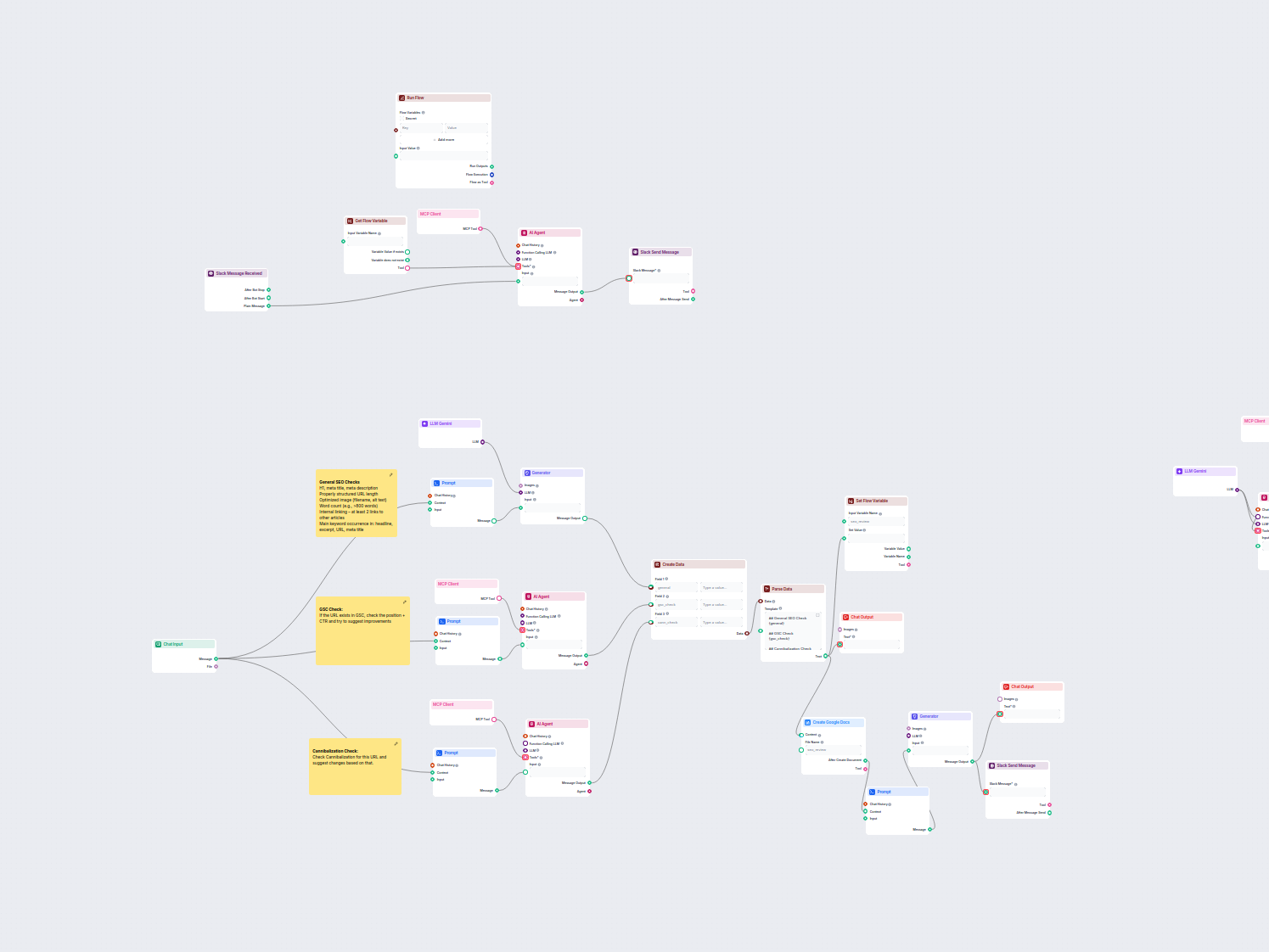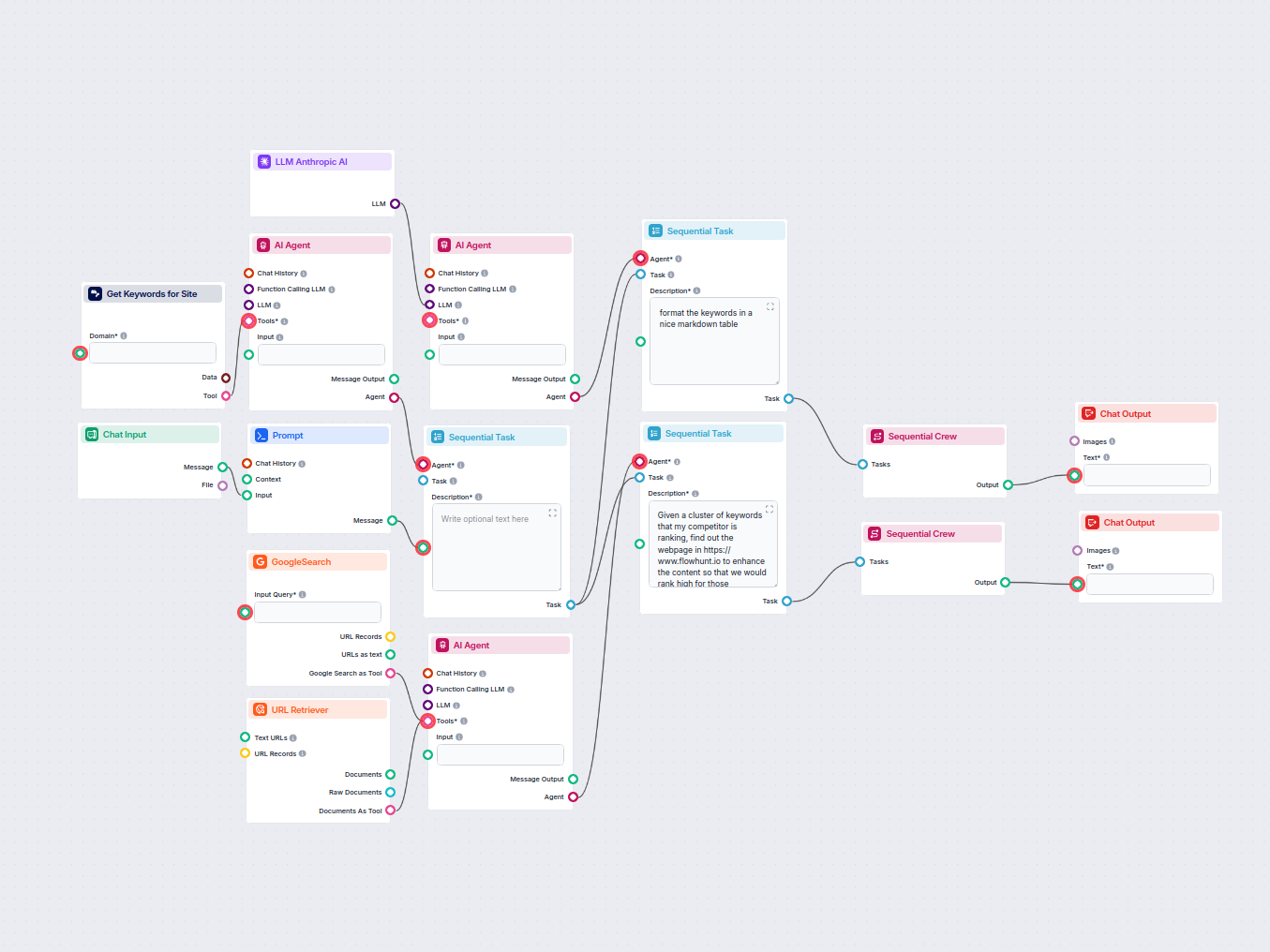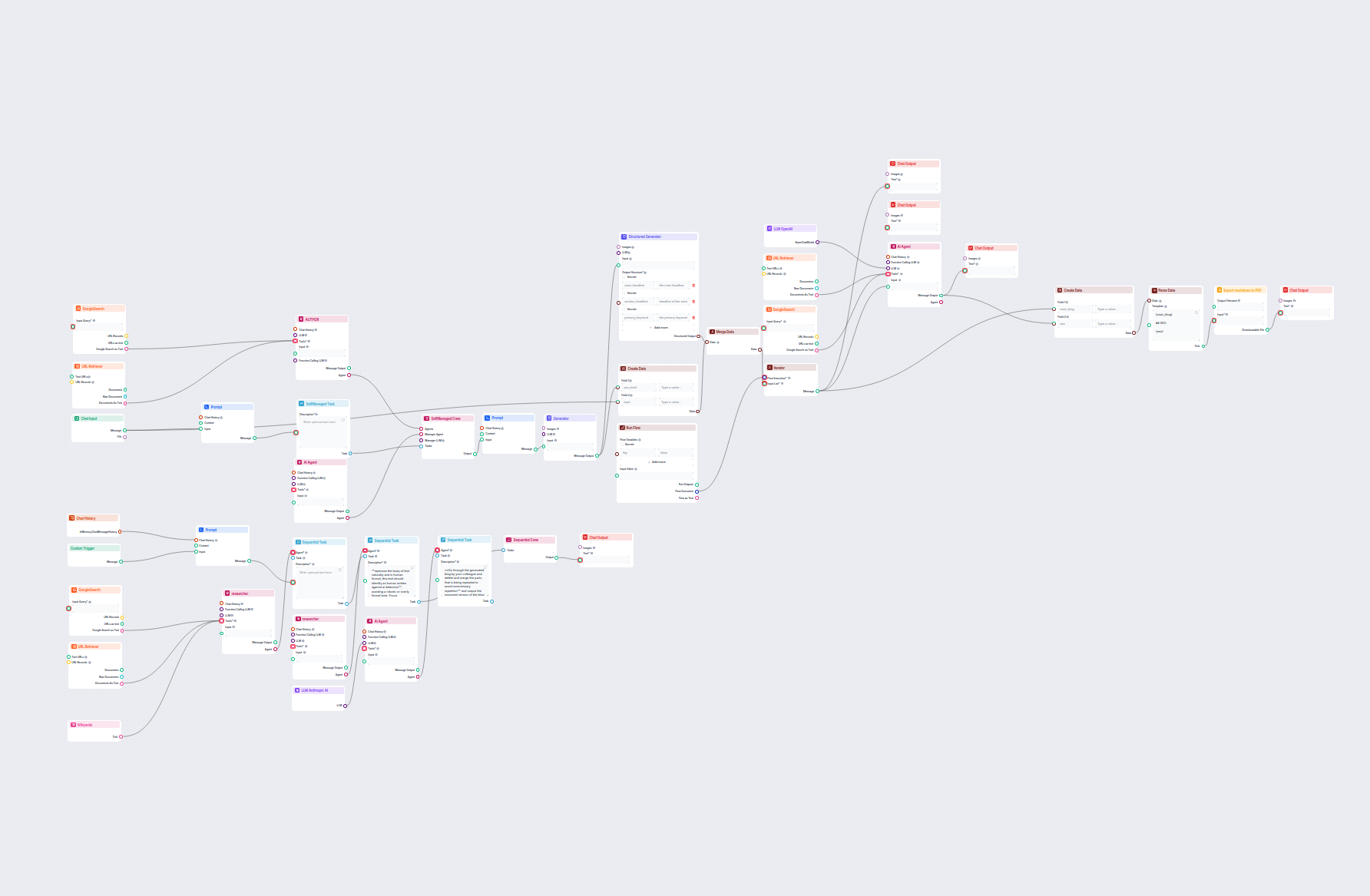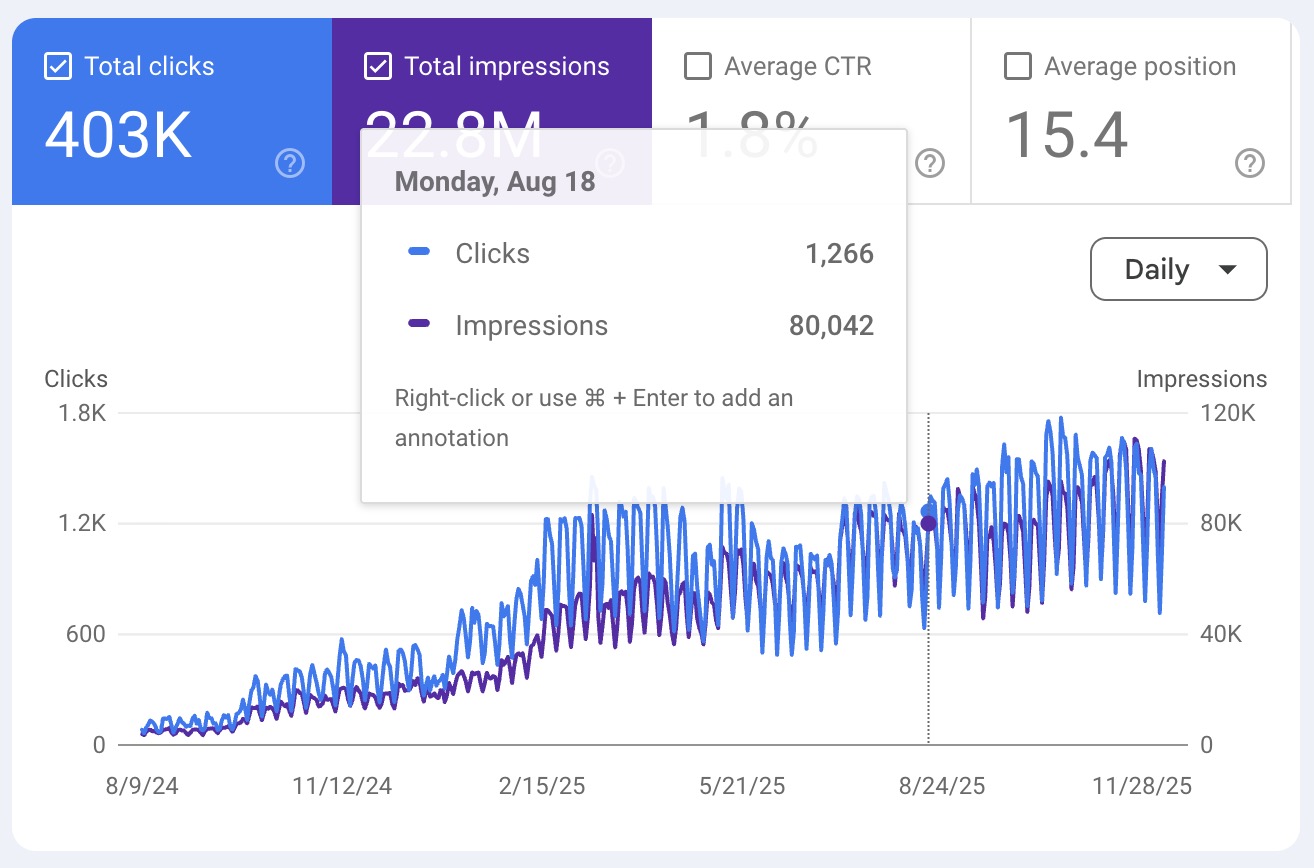Below is a complete list of all components used in this flow to achieve its functionality. Components are the building blocks of every AI Flow. They allow you to create complex interactions and automate tasks by connecting various functionalities. Each component serves a specific purpose, such as handling user input, processing data, or integrating with external services.
ChatInput
The Chat Input component in FlowHunt initiates user interactions by capturing messages from the Playground. It serves as the starting point for flows, enabling the workflow to process both text and file-based inputs.
Prompt Component in FlowHunt
Learn how FlowHunt's Prompt component lets you define your AI bot’s role and behavior, ensuring relevant, personalized responses. Customize prompts and templates for effective, context-aware chatbot flows.
Generator
Explore the Generator component in FlowHunt—powerful AI-driven text generation using your chosen LLM model. Effortlessly create dynamic chatbot responses by combining prompts, optional system instructions, and even images as input, making it a core tool for building intelligent, conversational workflows.
LLM Gemini
FlowHunt supports dozens of AI models, including Google Gemini. Learn how to use Gemini in your AI tools and chatbots, switch between models, and control advanced settings like tokens and temperature.
Create Data
The Create Data component enables you to dynamically generate structured data records with a customizable number of fields. Ideal for workflows that require the creation of new data objects on the fly, it supports flexible field configuration and seamless integration with other automation steps.
Parse Data
The Parse Data component transforms structured data into plain text using customizable templates. It enables flexible formatting and conversion of data inputs for further use in your workflow, helping to standardize or prepare information for downstream components.
Set Flow Variable
Effortlessly manage your workflow by setting or updating variables on-the-fly with the Set Flow Variable component. This tool allows you to assign values to named variables within your flow, enabling dynamic data handling and flexible flow logic.
Get Flow Variable
The Get Flow Variable component enables you to access variables and parameters within your workflow, making it easy to retrieve data stored earlier in the flow. It ensures that essential information is available for subsequent steps, supporting dynamic and context-aware automation.
AI Agent
The AI Agent component in FlowHunt empowers your workflows with autonomous decision-making and tool-using capabilities. It leverages large language models and connects to various tools to solve tasks, follow goals, and provide intelligent responses. Ideal for building advanced automations and interactive AI solutions.
MCP Client
Integrate multiple tools with your AI Agent effortlessly using the MCP Client component. Designed for seamless connectivity, it enables advanced workflows by serving as a bridge between your AI and various external tools, enhancing automation and capability.
Slack Message Received
This component represents the start of a Slack conversation with FlowHunt. It lets you control when, where, and how Flo’s Slack responses are triggered.
Slack Send Message
This component represents FlowHunt’s Slack messages back to you. It lets you control where and how FlowHunt sends messages and who it notifies.
Create Google Docs
Effortlessly generate new Google Docs documents within your automated workflows. The Create Google Docs component lets you specify document content and file name, enabling seamless integration of document creation into AI-driven processes. Perfect for automating document generation, reporting, and collaborative tasks.
Chat Output
Discover the Chat Output component in FlowHunt—finalize chatbot responses with flexible, multi-part outputs. Essential for seamless flow completion and creating advanced, interactive AI chatbots.






